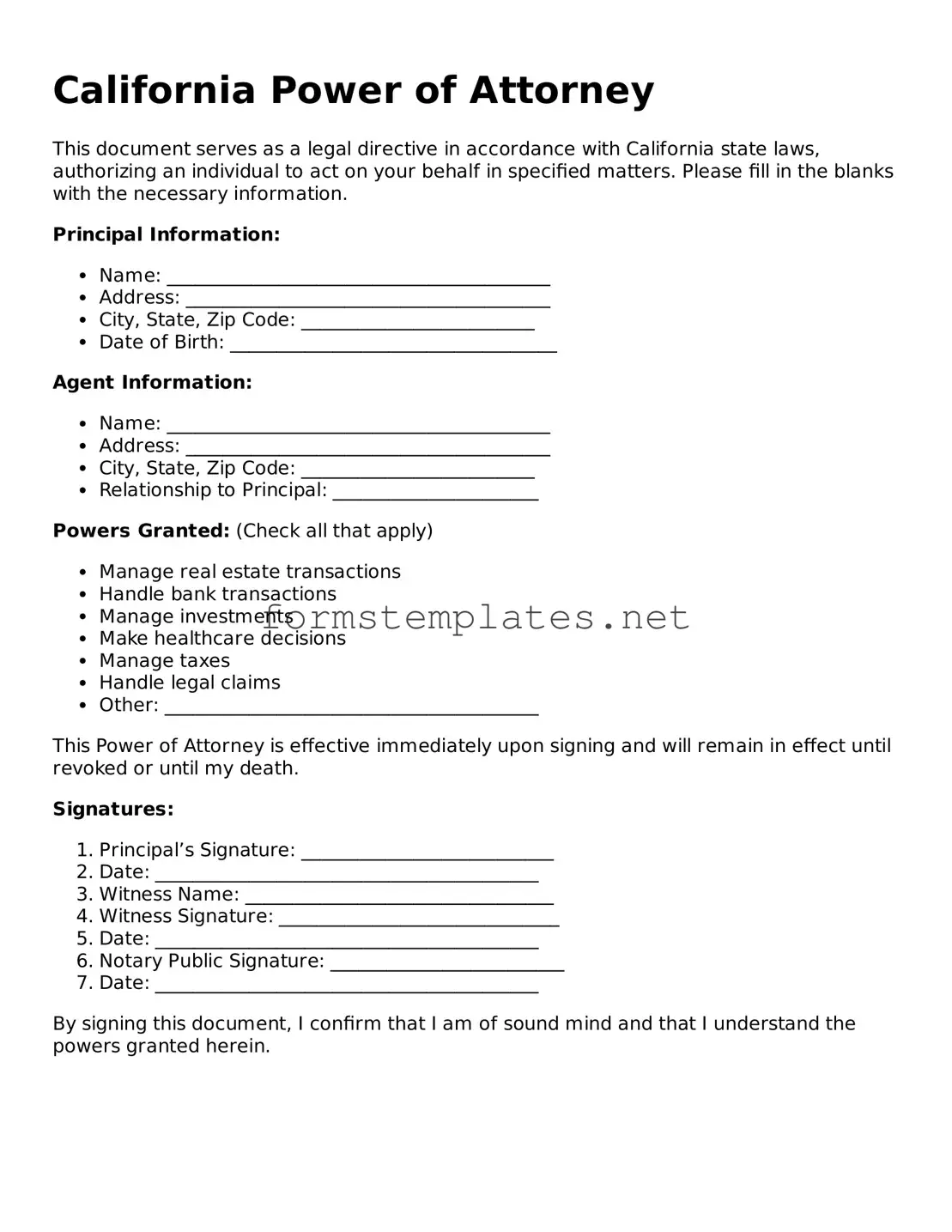California Power of Attorney
This document serves as a legal directive in accordance with California state laws, authorizing an individual to act on your behalf in specified matters. Please fill in the blanks with the necessary information.
Principal Information:
- Name: _________________________________________
- Address: _______________________________________
- City, State, Zip Code: _________________________
- Date of Birth: ___________________________________
Agent Information:
- Name: _________________________________________
- Address: _______________________________________
- City, State, Zip Code: _________________________
- Relationship to Principal: ______________________
Powers Granted: (Check all that apply)
- Manage real estate transactions
- Handle bank transactions
- Manage investments
- Make healthcare decisions
- Manage taxes
- Handle legal claims
- Other: ________________________________________
This Power of Attorney is effective immediately upon signing and will remain in effect until revoked or until my death.
Signatures:
- Principal’s Signature: ___________________________
- Date: _________________________________________
- Witness Name: _________________________________
- Witness Signature: ______________________________
- Date: _________________________________________
- Notary Public Signature: _________________________
- Date: _________________________________________
By signing this document, I confirm that I am of sound mind and that I understand the powers granted herein.
